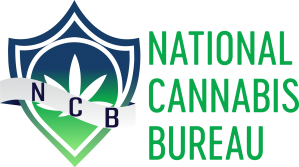The Arizona Department of Revenue recently released new data about cannabis sales reported for the months of June and July.
Medical cannabis sales started in Arizona back in December 2012, while recreational cannabis sales started in Arizona in January 2021, but recent data shows that both industries have been experiencing a gradual decrease in sales.
For medical cannabis during the month of June, sales dipped to $28 million followed by a downward trend of $26.1 million in July, which the Arizona Mirror reports as the lowest sales number for medical cannabis since recreational sales began. Within the past 30 months, medical cannabis sales have only fallen below the $30 million mark five times—all of which were recorded in 2023. This includes the months of January, February, May, June, and July, while sales in March and April remained above $30 million.
The highest amount of medical cannabis sales that the state has collected in its history of sales was in April 2021 with $73.4 million, and other monthly sales data shows a decrease in sales, such as July 2022 with $40 million.
These steady decreases in medical sales are seen alongside slight increases in recreational sales. In March 2023 recreational sales reached $99.9 million, while April recreational sales hit $90.1 million. However, June sales data shows a decrease to $85 million, followed by $77 million in July.
The total amount of money collected from total cannabis sales in 2022 was $1.4 billion (medical brought in $500 million, and recreational hit $9.50 million). Since January 2021, the state has collected $1.5 billion in medical cannabis sales, while recreational sales made more than $2.2 billion within the same time period.
Year-to-date data shows that so far between January-July, Arizona has collected a total of $207 million in medical cannabis sales, and $621 million in recreational cannabis sales.
So far, the data reviews how recreational cannabis has reached new heights while medical cannabis sales gradually decrease, but both markets have been trending downward overall since March 2023.
Data for state excise taxes show that recreational cannabis has generated more than $208.2 million in 2023 (so far), which is an increase compared to excise tax data for 2021. The department shows that adult-use cannabis generated $32.9 million over the course of 11 months, followed by $132.8 million in 2022. In overall cannabis excise taxes, Arizona has collected more than $360 million.
State law requires that one third of cannabis excise taxes go toward community colleges, while 31% goes toward public safety as well as law enforcement and fire departments. Additionally, 25% is given to the Arizona Highway User Revenue Fund, which is distributed to various cities and towns to improve highway construction and other related expenses. Finally, 10% of cannabis taxes are put into the justice reinvestment fund, which can be used for various substance abuse programs, workforce development, but also to accomplish other goals such as helping residents expunge their criminal records.
Cannabis patient card numbers are collected by the Arizona Department of Health Services, which recently reported that there were 126,938 cardholders in July, and 124,496 in August. The state’s highest number of cardholders was recorded in January 2021 with 299,054 patients. The department also shared that during the month of August, medical cannabis patients bought 4,719 pounds of various cannabis products. Between January and August, patients have purchased 37,979 pounds.
Even though medical cannabis sales have decreased, it hasn’t stopped patients from using it to treat their various medical conditions. In March, a bill was introduced to add autism and post-traumatic stress disorder to the list of qualifying conditions, and was passed by the House in June.
A year ago in 2022, more than 1,450 Arizonians were pardoned from their past federal cannabis possession convictions between 1992-2021, as directed by the Executive Order announced by President Joe Biden. According to Arizona attorney Jonathan Udell, this was a welcome change for people whose convictions have been on their record for decades. “I think there’s a lot of people out there that really feel the sting of being branded a non-law-abiding citizen,” Udell said. “And this sends a very big message to those people that you’re not a bad person because you smoked a plant one time that grew out of the ground or possessed some grass in your pocket.”
While the industry keeps a close eye on the performance of both medical and recreational cannabis, other substances being researched for medical use are also continuing to grow. Earlier this year in May, an Arizona veteran was facing prison time for trying to treat his cluster headaches with DMT. “It’s the worst pain I’ve ever felt in my life,” Laetzsch said about the headaches. “Nothing helps the headache as well as DMT when I’m actually having it. It will abort the headache immediately. A small hit will abort the headache for about an hour to an hour and a half. If I take a bigger hit it can last longer but some of the headaches last a few hours so I would have to take a few hits during that episode. But, I would be pain-free. It wasn’t even a psychoactive amount that I smoked to abort the headache.” Currently, DMT is illegal in Arizona.
Psilocybin is also illegal in the state, although recent legislation has been introduced to allow research to be conducted on the substance.
The post Arizona Department of Revenue Release Cannabis Sales Data for June, July appeared first on High Times.

